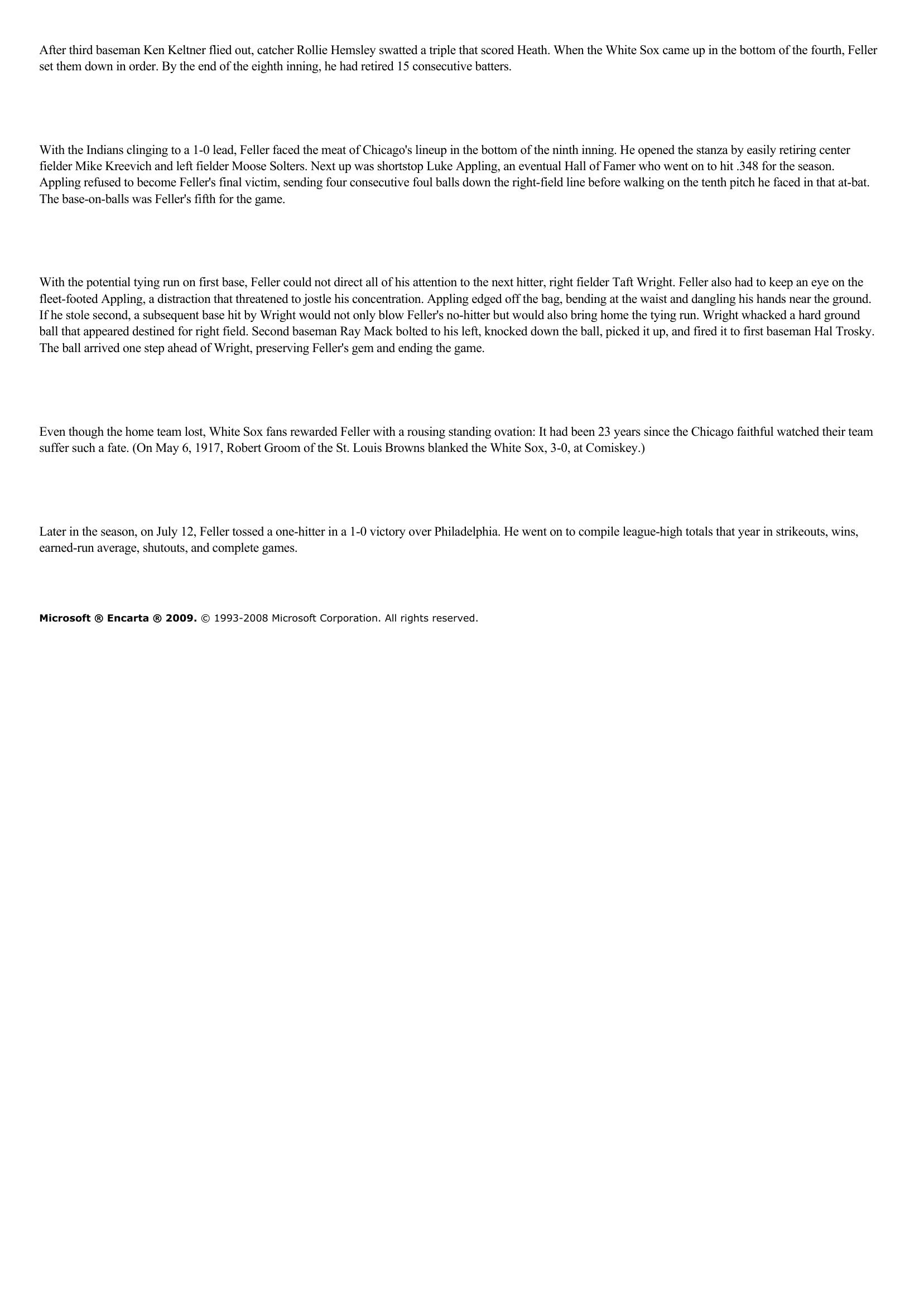Bob Feller's Opening Day No-Hitter.
Publié le 14/05/2013

Extrait du document
«
After third baseman Ken Keltner flied out, catcher Rollie Hemsley swatted a triple that scored Heath.
When the White Sox came up in the bottom of the fourth, Fellerset them down in order.
By the end of the eighth inning, he had retired 15 consecutive batters.
With the Indians clinging to a 1-0 lead, Feller faced the meat of Chicago's lineup in the bottom of the ninth inning.
He opened the stanza by easily retiring centerfielder Mike Kreevich and left fielder Moose Solters.
Next up was shortstop Luke Appling, an eventual Hall of Famer who went on to hit .348 for the season.Appling refused to become Feller's final victim, sending four consecutive foul balls down the right-field line before walking on the tenth pitch he faced in that at-bat.The base-on-balls was Feller's fifth for the game.
With the potential tying run on first base, Feller could not direct all of his attention to the next hitter, right fielder Taft Wright.
Feller also had to keep an eye on thefleet-footed Appling, a distraction that threatened to jostle his concentration.
Appling edged off the bag, bending at the waist and dangling his hands near the ground.If he stole second, a subsequent base hit by Wright would not only blow Feller's no-hitter but would also bring home the tying run.
Wright whacked a hard groundball that appeared destined for right field.
Second baseman Ray Mack bolted to his left, knocked down the ball, picked it up, and fired it to first baseman Hal Trosky.The ball arrived one step ahead of Wright, preserving Feller's gem and ending the game.
Even though the home team lost, White Sox fans rewarded Feller with a rousing standing ovation: It had been 23 years since the Chicago faithful watched their teamsuffer such a fate.
(On May 6, 1917, Robert Groom of the St.
Louis Browns blanked the White Sox, 3-0, at Comiskey.)
Later in the season, on July 12, Feller tossed a one-hitter in a 1-0 victory over Philadelphia.
He went on to compile league-high totals that year in strikeouts, wins,earned-run average, shutouts, and complete games.
Microsoft ® Encarta ® 2009. © 1993-2008 Microsoft Corporation.
All rights reserved..
»
↓↓↓ APERÇU DU DOCUMENT ↓↓↓
Liens utiles
- CHALEUR DU JOUR (La) [The Heat of the Day]. (résumé) Elizabeth Bowen
- Introduction : Last day, I saw a documentary about the evolution of the family.
- The light of day
- bob tout puissannt
- MONSIEUR BOB'LE. Pièce en trois actes et en prose de Georges Schehadé (résumé de l'oeuvre & analyse détaillée)













